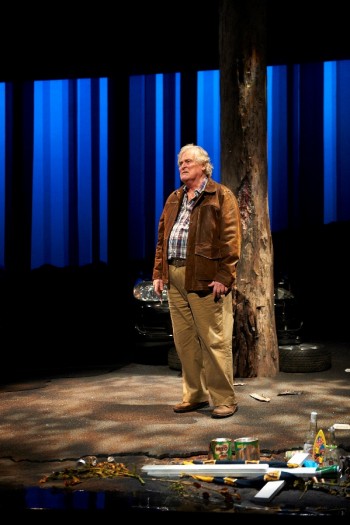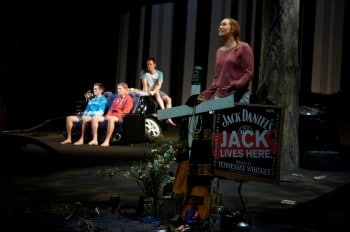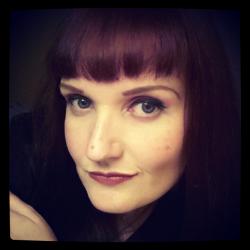Shrine – Black Swan State Theatre Company

Image by Gary Marsh Photography
Tim Winton’s Shrine is beautifully flawed; somehow, structurally, its scope seems beyond the confines of theatre and it might seem a better fit for film, or be best savored from the page. But then, once the play finishes, it’s obvious from the sense of communal catharsis why the work does exist for theatre. There are moments of impact that are best felt live, and are so powerful the wave of their energy surges through the entire room, right up to the circle.
The language is wonderful; the conversations have a natural ease while still maintaining elegance and intelligence, and the frequently descriptive dialogue is filled with poetic imagery that forces us to use our imaginations in the same way we would when reading a novel. We have to work a little bit at following the stream of consciousness narrative style, but it’s worth it. We have to adjust quickly to the jumps in time and reality, and it’s best to abandon the need for structure in favor of an emotional and sensory understanding of events.
The visual world of Shrine created by Trent Suidgeest (set and lights) is sweeping; referencing the ocean, the beach, the forest, the road, sometimes all at once. It is a visual summation of our environment in Western Australia, with the heavy presence of bitumen pooling and slicing its way across the land against a backdrop of vast ocean and sky. The single tree downstage left is often the only vertical line of the scenery and it seems a sharp, confronting interjection into the landscape. Indeed it represents the physical, violent intersection between life and death that pervades this story and is a potent reminder of how dangerous the clashes between man and nature can be. There is also the massive, oppressive wave that gets flown in halfway through; it too speaks to us of the dark, deadly side of the ocean. As a backdrop to the scenes that play out before it, it speaks of the dark, deadly side of ourselves.
The actors seem to float in the space; the black, curved, raked stage creates a kind of optical illusion where we’re never sure exactly what spatial plane the actors are on. Our depth perception is also confused by the different drops flown in and out of the space behind the floor. In effect, this complements the narrative style and the story absolutely perfectly. All the elements are integrated and so much is evocative rather than literal. And the uniting force behind it all is the raw human emotion of a tale that is all too familiar in our world: young kid gets killed in a car accident.
The performances are beautiful. John Howard (Adam Mansfield, the father) is somehow both commanding and unimposing, both strong and defeated. His grief is palpable, but it doesn’t seem manufactured for the stage; it seems familiar, like our neighbor’s grief, or our friend’s grief, or our father’s grief. His struggle is held back out of consideration for the feelings of others rather than denial. Sarah McNeill’s grief as Mary Mansfield, on the other hand, is blatant, unrelenting, uncompromising. We know from the start that she is barely holding herself together and when she does let it all go, McNeill gives way completely to the emotion without reservation. Every mother’s agony pours from her out into the auditorium and the visceral impact of her cries is distressing and heart-breaking.

Image by Gary Marsh Photography
Whitney Richards as June Fenton, the young country girl in love, must endure some difficult scenes, but she achieves the same impressive duality that John Howard does and embodies the diametrically opposed characteristics of light and dark, strength and weakness. Indeed their characters are kindred spirits, and they help ease each other’s pain by finding common ground. The two young men, Will (Luke McMahon) and Ben (Will McNeill), are suitably puerile and odious, as suits the memory of the other characters. Their balletic horseplay quickly turns threatening with the aid of drugs and alcohol. Paul Ashcroft as Jack Mansfield is the dramatic centerpiece and he is a gentle, heroic memory until pushed to the brink, much like Shakespeare’s Romeo.
It’s wonderful to see this challenging work performed in its birthplace, with the blessing of the cherished playwright as he joins the cast on stage and mixes with the patrons before and after. This is a bold and rich work that takes us lovingly and hauntingly into dangerous territory, but brings us back home with care.

